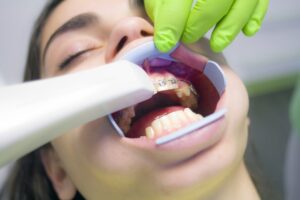When Is It Truly an Orthodontic Emergency?
Orthodontics is a vital field of dentistry focused on correcting teeth and jaws that are positioned improperly. Effective treatment not only enhances your smile but also ensures the proper function of your teeth and supports overall oral health. Knowing when you face an orthodontic emergency can save you from prolonged discomfort and potentially dire dental complications.
Understanding Orthodontic Emergencies

An orthodontic emergency refers to any issue involving your braces or aligners that requires immediate professional intervention to prevent risk to your health, alleviate severe pain, or address any significant malfunction of your orthodontic appliances. While not all orthodontic issues are emergencies, identifying those that are critical to maintaining your treatment progress and comfort.
What is an Orthodontic Emergency
An orthodontic emergency includes any severe, acute issues that cannot be self-managed and need prompt professional attention. These are typically situations that cause significant pain, pose a risk of infection, or critically impair the function of your orthodontic appliance.
Differentiating Minor Discomfort from True Emergencies
It’s normal to experience some discomfort after adjustments to your orthodontic appliances. However, when pain escalates to an unbearable level or is accompanied by signs of infection such as swelling, redness, or bleeding, it becomes an emergency. Understanding this difference is crucial as it helps you react appropriately without undue stress.
Statistics on Common Orthodontic Issues and Emergencies
While exact numbers vary, a significant portion of orthodontic visits are due to emergencies. Common issues include broken brackets, snapped wires, or severe pain after an adjustment. These instances require differing levels of attention, from immediate to scheduled repair.
Common Types of Orthodontic Emergencies
Orthodontic emergencies can vary significantly in their urgency and severity. Here, we outline several scenarios that require immediate attention from an orthodontist to ensure your safety and the effectiveness of your treatment.
Broken Brackets or Bands
Brackets and bands are integral components of braces. If a bracket breaks or a band comes loose, it can interfere with the appliance’s ability to properly adjust your teeth.
- Signs of Emergency: If a broken bracket or band is causing severe discomfort or cutting into your gums or cheeks, it’s imperative to see your orthodontist. Another sign of emergency is if the break severely affects the stability of the braces.
- Temporary Measures: Cover any sharp edges with orthodontic wax to protect your mouth. Avoid adjusting the bracket or band yourself.
Poking or Protruding Wires
Occasionally, wires on braces can shift and begin poking the mouth, leading to discomfort or injury.
- How to Handle: Use the eraser end of a pencil to gently push the wire flat against the tooth. If this isn’t possible, cover the protruding end with orthodontic wax.
- When to See Your Orthodontist: If the wire has caused a sore or cut, or if you cannot resolve the discomfort on your own, it’s time to visit your orthodontist.
Lost or Broken Aligners
For those using clear aligners like Invisalign, losing or breaking an aligner can disrupt the treatment timeline.
- Impact on Treatment: Lost or broken aligners should be replaced immediately to avoid any setbacks in your treatment plan.
- Steps to Take: Contact your orthodontist to discuss the next steps, which may include moving to the next set of aligners or ordering a replacement.
Severe Pain or Discomfort
While mild pain is common, intense or persistent pain is not normal and may signal an issue.
- Identifying Severe Pain: If the pain does not subside with over-the-counter pain relievers or persists for more than a couple of days, it could be an emergency.
- Recommended Management: Contact your orthodontist for advice. They may suggest immediate adjustments or prescribe stronger pain relief.
Injuries to the Mouth and Teeth
Accidents happen, and sometimes they involve damage to your orthodontic appliances, which can exacerbate injuries to your mouth or teeth.
- Immediate Actions: Rinse your mouth with warm saltwater for cleanliness and gently apply a cold compress to reduce swelling.
- Assessing Urgency: If there is significant bleeding, cuts to the gums or cheeks, or damage to the teeth, seek immediate orthodontic and possibly medical attention.
Understanding these common emergencies and knowing how to initially manage them can significantly mitigate potential damage and discomfort. However, the key to handling these emergencies effectively lies in your prompt response and the immediate consultation of your orthodontist.
Understanding What Is NOT an Orthodontic Emergency
It is equally important to recognize situations that do not qualify as orthodontic emergencies. This understanding can help avoid unnecessary panic and visits, allowing orthodontic professionals to focus on true emergencies. Here are some common issues that, while possibly uncomfortable or concerning, typically do not require immediate orthodontic intervention:
Minor Discomfort and Soreness
It’s common to experience discomfort for a few days after braces are tightened or when a new aligner is used. This is normal and usually manageable with over-the-counter pain relievers.
Minor irritation to the lips, cheeks, or gums from braces or other appliances can often be managed by applying orthodontic wax to the offending part of the appliance.
Loose Spacers
Spacers may fall out occasionally, especially if they have done their job of creating enough space between your teeth. This is typically not urgent unless it causes significant discomfort or happens repeatedly.
Lost Retainers or Aligners
While losing a retainer or aligner can affect your treatment progress, it does not pose an immediate threat to your health or cause severe pain. Contact your orthodontist to discuss the next steps, but understand this may often be handled during regular business hours.
Discoloration of Elastics or Brackets
Changes in the color of the elastics or staining on the brackets are primarily aesthetic issues that do not require emergency care. These can be addressed during your next scheduled visit.
Mild Loosening of Brackets or Bands
If a bracket remains attached to the wire and isn’t causing significant discomfort or injury, it’s often safe to wait until your next appointment for reattachment or replacement.
By distinguishing between true orthodontic emergencies and less critical issues, patients can better manage their situations with appropriate actions. Knowing when to contact an orthodontist during regular hours for non-urgent issues maintains an efficient flow of care and ensures that everyone receives the appropriate level of attention at the right time.
What to Do in an Orthodontic Emergency
When you encounter an orthodontic emergency, swift and appropriate actions are crucial to managing the situation effectively until you can receive professional care. Here’s a practical guide on how to respond when facing an orthodontic emergency.
Steps to Take Immediately Following Identification of an Emergency
- Assess the situation: Quickly determine the severity of the issue. Identify whether there is severe pain, bleeding, or significant appliance damage.
- Manage pain and discomfort: Apply orthodontic wax to cover any sharp edges or protruding wires. If there is pain, over-the-counter pain relievers like ibuprofen can be used according to package directions.
- Protect the mouth: If there are loose parts, remove them if possible to prevent swallowing or further injury. Rinse your mouth with saline or warm salt water to keep it clean and reduce the risk of infection.
Preparing for an Emergency Orthodontic Visit
- Contact your orthodontist: Inform them about the emergency situation. Most orthodontic offices have an emergency contact number for after-hours situations.
- Describe the issue clearly: Provide a detailed description of the problem, including when it started, any actions you’ve taken, and the current state. This information will help your orthodontist prepare for your visit.
- Follow interim care instructions: Your orthodontist might give specific advice on how to care for your appliance or injury until you can be seen.
What to Bring to Your Emergency Appointment
- Medical and dental history information: Especially if you are visiting a new clinic that does not have your records.
- List of medications: Include any medications you are currently taking, as this could influence treatment options.
- Previous orthodontic appliance details: If you have parts of your appliance, like a broken aligner or bracket, bring them along.
The promptness of your response to an orthodontic emergency can greatly influence the outcome. By understanding what steps to take and preparing adequately for your emergency appointment, you can ensure that these urgent issues are resolved with minimal impact on your health and ongoing treatment. Proper initial actions also reduce the risk of complications, helping to maintain the continuity and effectiveness of your orthodontic care.
Preventing Orthodontic Emergencies
While it’s crucial to know how to respond to orthodontic emergencies, preventing such situations is equally important. By following a few best practices, you can minimize the risk of encountering severe issues during your orthodontic treatment.
Best Practices for Maintaining Orthodontic Appliances
- Regular Maintenance: Adhere to the cleaning and care instructions provided by your orthodontist. Proper maintenance, like brushing around brackets and using the right cleaning tools, can prevent buildup that might cause complications.
- Wear Protective Gear: If you engage in sports or physical activities, wearing a mouthguard is essential to protect your teeth and orthodontic appliances from potential impacts that could lead to emergencies.
- Routine Check-Ups: Attend all scheduled orthodontic appointments. These visits allow your orthodontist to monitor your progress and make necessary adjustments to your appliances, reducing the likelihood of emergencies.
Foods to Avoid and Lifestyle Tips
- Steer Clear of Hard and Sticky Foods: Hard candies, ice, popcorn, and sticky foods like caramel can damage orthodontic appliances. Avoiding these can greatly reduce the risk of breaking brackets or bending wires.
- Cut Down Large Foods: Large items like apples or corn on the cob should be cut into smaller pieces before eating to lessen the stress on your braces.
Regular Orthodontic Check-Ups and Their Importance:
- Early Detection of Potential Issues: Regular visits help your orthodontist spot and address minor issues before they develop into emergencies.
- Adjustment of Appliances: These appointments are crucial for making adjustments to your braces or aligners, ensuring they are as effective and comfortable as possible.
Count on Holt Orthodontics for Expert Emergency Orthodontic Care
When it comes to your orthodontic care in Sacramento, Folsom, Rocklin, and Roseville, CA, the expertise and reliability of the care provider are paramount. At Holt Orthodontics, we understand the importance of being available and responsive in the event of an emergency. Orthodontic emergencies might be rare, but their impact can be significant. That’s why our dedicated team is committed to ensuring that help is available when you most need it.
Choosing the Right Orthodontist Matters
At Holt Orthodontics, our practice is built on a foundation of trust, expertise, and a patient-centered approach. We are here to support your child’s journey to a beautiful, healthy smile, even when unexpected situations arise.
For any orthodontic emergencies or inquiries about our services, please call our office directly.


